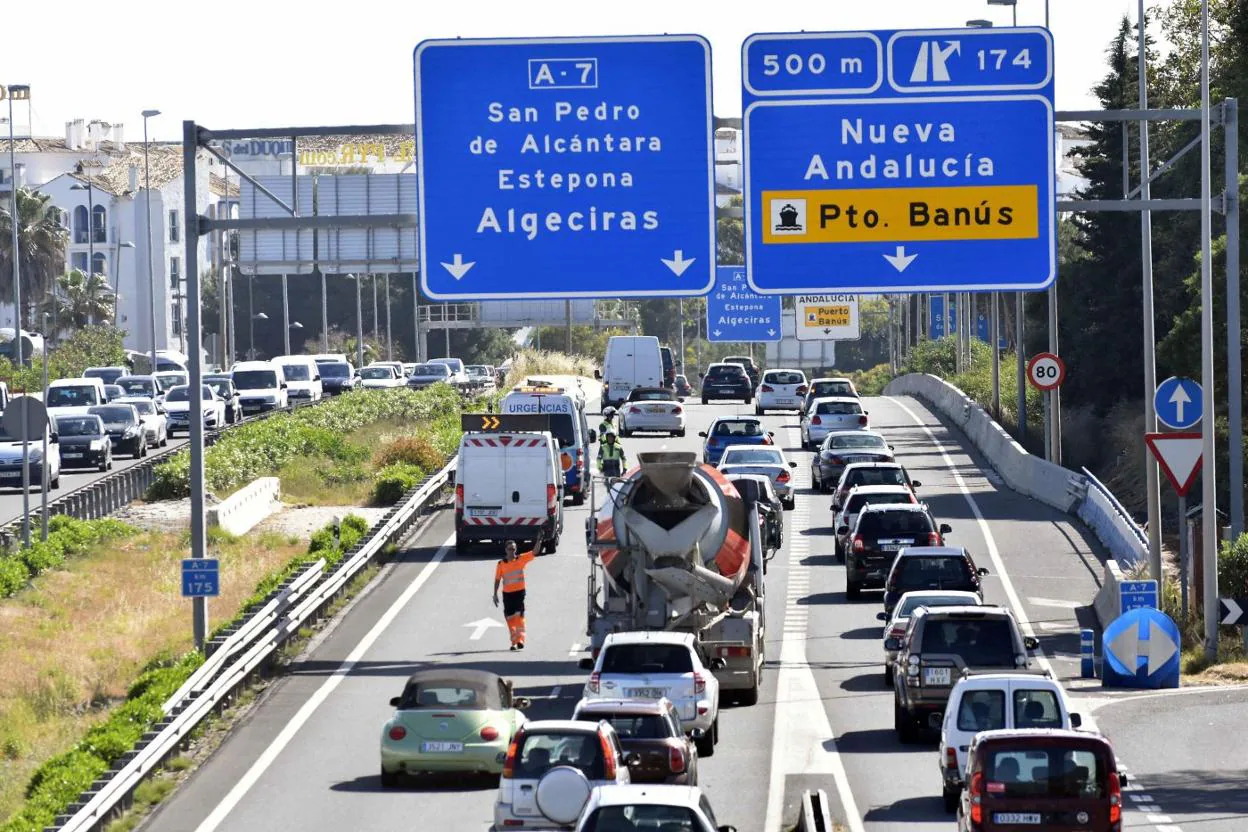Changes to A-7 exit numbers on the way: Marbella East will be 1044 and Vélez 953
Central government is to reorganise the numbering of all 84 junctions on the Costa del Sol to avoid duplication on other sections of the A-7 route
FRANCISCO JIMÉNEZ
MALAGA.
Friday, 14 January 2022, 11:32
The thousands of drivers who use the A-7 Costa del Sol motorway on a daily basis will have to get used to new numbers on each of the 84 exits along the 164-kilometre stretch of the road between Nerja and Manilva.
As examples of the changes being implemented by the Ministry of Transport, the current 242 exit, located to the north of Malaga city and used to access Ciudad Jardín or La Rosaleda stadium, will become 922; exit 184 at Marbella East will be 1044; Vélez's 272 shifts to 953; and Arroyo de la Miel's 222 exit will be modified to 1003. But what's behind these changes?
In Spain, road junctions are numbered according to their distance, in kilometres, from the start of each road. (Kilometre points are also used to identify the exact location of an accident or a speed camera, for example.)
The A-7 these days runs all the way from Barcelona to Algeciras beyond Gibraltar, but different sections were opened or renamed at different times over the years. These new changes will avoid there being junctions with the same number on different stretches of the entire length of the - now complete - A-7 road.
To understand this situation, you have to look back at an official road list from 1988. In it you can find two roads: the A-7 (Autovía del Mediterráneo), which went from the French border all the way to Alicante; and the N-340, which joined Algeciras with Barcelona via the Costa del Sol.
A part-legacy of the old N-340
In 2003, the naming was modified when a new road gazetteer was published, which joined parts of the old A-7 with the N-340, so the road known as the Autovía del Mediterráneo started in Catalonia and ended in Algeciras. To make matters worse, when the stretch of the A-7 between Algeciras and Alicante was built, it was called the A-7 but kept the numbering system from the N-340, starting from Algeciras. This led to numerous junction numbers being repeated.
On the Costa del Sol there is another circumstance that complicated the numbering even further: several stretches of the free-to-use A-7 overlap with the pay-to-use AP-7 and are managed by the toll road company.
Currently, the kilometre markers on these stretches of the A-7 follow the ones corresponding to the AP-7, which means that drivers will notice numbers that don't add up on the road signs. This project will provide continuity.
With the road signs already updated in both Alicante and Murcia, it's now Almeria, Granada, Malaga and Cadiz's turn. The government has formalised the contract with a budget of 350,862 euros and a deadline of one year. The existing numbering of the A-7 exits between Almeria and Cadiz province will be modified, with this stretch starting in Almeria at kilometre point 663 (currently 565) and finishing at 1,122 (now 103).
In Malaga province, the first kilometre point coming in from Almuñécar will go from 302 to 923, and the road will cross into Cadiz province at kilometre 1,087 instead of 138. The route itself will not change, but the road through Malaga province will go from having an apparent length of 194 kilometres to 164, which is the real number.
A total of 84 junctions need modifying just in the province of Malaga alone. And for eagle-eyed drivers who want to know the location of speed cameras, these won't be physically moved. However the radar that caught most people out in Spain, located in El Palo (Malaga), will no longer be at kilometre 246.6, but at 979.
